#mexican muralism
Text

Detail, The Spirit of Fire, Diego Rivera
Photograph by Tina Modotti, 1920s
#art#painting#diego rivera#mexican artists#italian photographers#mexican muralism#black and white#the spirit of fire#fresco#chapingo mexico#photography
51 notes
·
View notes
Text

Carlos Merida
El Nahuatl, ca. 1950
Gouache and ink on amate paper
21 1/4 × 14 1/2 in

I'm a big fan of Merida & "Mexican Muralism"

Detail of Merida's "Abstracción integrada" (integrated abstraction) 1967, & Carlos Merida photo


Carlos Mérida (December 2, 1891 – December 21, 1985) was a Guatemalan artist who was one of the first to fuse European modern painting to Latin American themes, especially those related to Guatemala and Mexico. He was part of the Mexican muralism movement in subject matter but less so in style, favoring a non-figurative and later geometric style rather than a figurative, narrative style. Mérida is best known for canvas and mural work, the latter including elements such as glass and ceramic mosaic on major constructions in the 1950s and 1960s. One of his major works 4000m2 on the Benito Juarez housing complex, was completely destroyed with the 1985 Mexico City earthquake, but a monument to it exists at another complex in the south of the city.
Here's one of his older works -
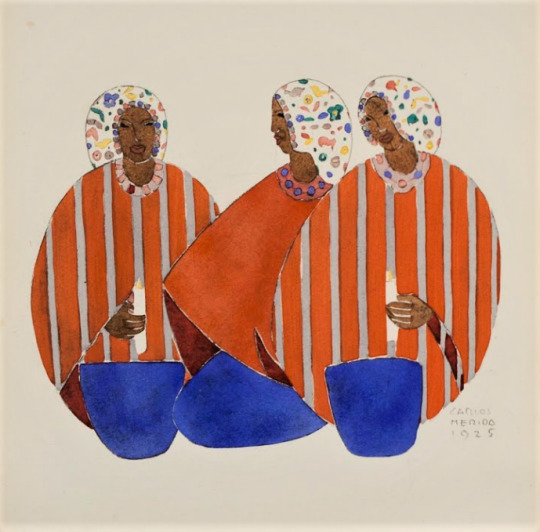
"Mujers con Velas" (Women with Candles) from 1925

Title: En tono mayor (In major key)
Creator: Carlos Mérida
Date Created: 1981
Location: Guatemala
Physical Dimensions: w95.5 x h32.5 in.

#art#paintings#carlos merida#merida#guatemala#mexican muralism#muralism#Mujers con Velas#Women with Candles#Abstracción integrad#murals#integrated abstraction#abstract art#abstract#En tono mayor#in major key
23 notes
·
View notes
Text


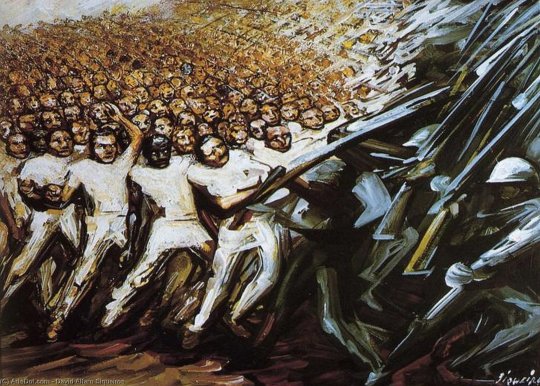

16 notes
·
View notes
Text

Indigenous peoples in the US were influenced by the Mexican Revolution. In 1940, Todd Downing (Choctaw) wrote "The Mexican Earth" a History of Mexico from the Aztecs to Lázaro Cárdenas's presidency. In it, Downing saw hope for American Indians in Mexico. A thread

"The Mexican Earth" (1940) is part history, part travelogue. Throughout the book, Downing describes scenes from his trip to Mexico and how these connect with the Indigenous history of Mexico and his lived experience as a Choctaw. A history of Mexico from American Indians eyes.
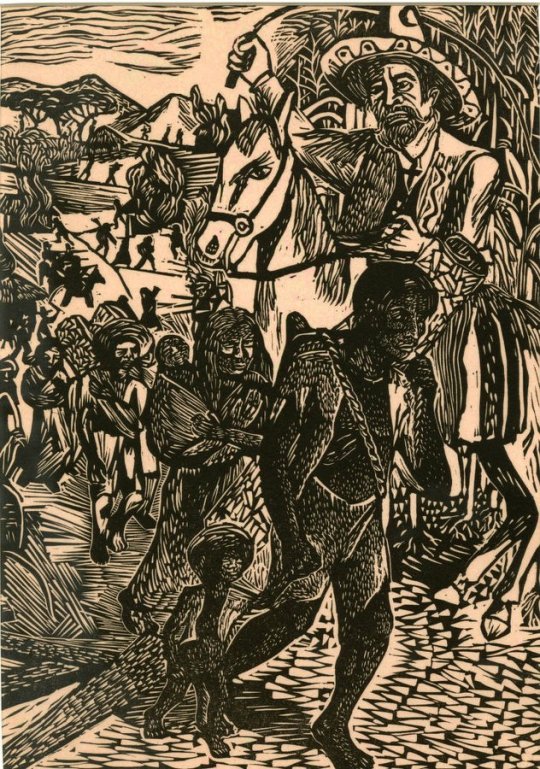
Downing compares settler colonialism in the US with Argentina (Conquest of the Desert), Chile, (Occupation of the Araucania), and Mexico with the Lerdo Law of 1857. This law broke up church lands but also forced the Indian ejidos (communal farmlands) to be private property.

In the chapter "Return of Quetzalcoatl" Downing gives his highest praise to Pres. Cárdenas for returning 45 million acres to Natives, saying "The great conquest of the revolution was a return to Indian values, concretely expressed in that pre-conquest institution, the ejido"
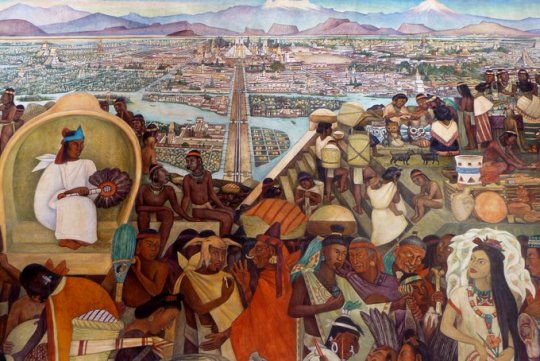
On Mexican Muralism, Downing praises it and artists like Diego Rivera, saying "The walls... were being covered with the frescoes which now are familiar to all the world, frescoes which give proof for all to see of what the Indian had to contribute to Mexican civilization."

As a Choctaw writer, Todd Downing teaches us that there are great possibilities for Natives in North America if there is a inter-cultural dialogue with the radical Indigenist movements in Latin America. Just like the Zapatistas, Natives can learn from the Mexican Revolution.
SOURCE: New Amauta
@AmautaNew
#Argentina#Mexican art#Mexican Muralism#Todd Downing#Mexican Revolution#Indigenous People#The Mexican Earth#Settler Colonialism
9 notes
·
View notes
Text

#collage inspiration#collage material#painting#diego rivera#mexican#mexican muralism#20th century art
1 note
·
View note
Text
Exploring the Heart of Mexican Artistry at Kansas City's Nelson-Atkins MuseumJuly 15, 2013 - From the Archives

View On WordPress
#Art and Politics#Art History#Art in the Americas#artistic expression#Artistic Legacy#Contemporary Mexican Art#Cultural Heritage#Cultural identity#Diego Rivera#Frida Kahlo#Gerardo Suter#Kansas City Art Exhibition#Latin American Artists#mexican art#Mexican Folklore#Mexican Muralism#Nelson-Atkins Museum#Self-Portraiture#Surrealist Art#Visual Narratives
0 notes
Text
I remember meeting Diego Rivera’s granddaughter, Guadalupe Rivera Marín, when she came to see the exhibition “Picasso & Rivera: Conversations Across Time,” at the Los Angeles County Museum of Art in December 2016. She was generous in leading a walkthrough of the show and regaling visitors with stories of her father. We shared a rather intimate moment when I accompanied her and her grandson in an Uber to LAX on the day of their departure. I felt a deep respect and admiration as I sat next to her on the ride to the airport. May she rest in peace.
Recuerdo haber conocido a la nieta de Diego Rivera, Guadalupe Rivera Marín, cuando viajon desde la Cuidad de Mexico para ver la exposición "Picasso & Rivera: Conversaciones a través del tiempo", en el Museo de Arte del Condado de Los Ángeles en diciembre de 2016. Fue generosa en dar un tour de la exposición y deleitando a la gente con historias de su padre. La acompañé a ella y a su nieto en un Uber a LAX el día de su partida. Sentí un profundo respeto y admiración sentada a su lado en el camino al aeropuerto. Que descanse en paz.
0 notes
Text
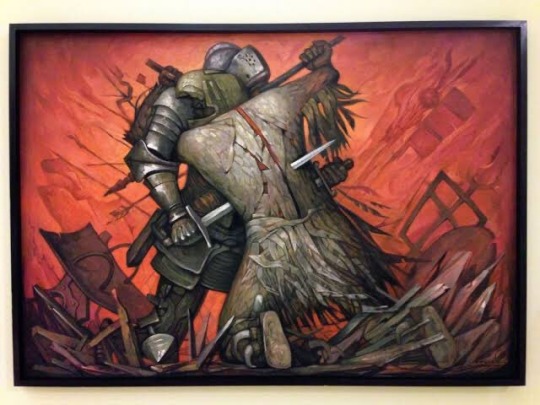
El Abrazo by Jorge González Camarena. I was taken away by this painter at the Palacio de Bellas Artes in CDMX, completely unfamiliar with him before hand.
0 notes
Text

#you can judge a mexican restaurant#and their level of authenticity#by the number of dbz murals it has#if the place is less than 15 years old#if there's not at least one#go elsewhere
135 notes
·
View notes
Text

Microcosmo (mas também chamada Determinismo). Quadro de 1959 que sintetiza a consagração de Remedios Varo no México. Com referências esotéricas e astrológicas, Microcosmo foi originalmente concebida para ser um mural. No entanto, o projeto nunca chegou a se concretizar. Para entender melhor essa história basta clicar aqui.
.
Microcosm (also named Determinism) painted in 1959.
#mulheres artistas#remedios varo#surrealism#surreal#mexican artist#pintoras#mural art#zoodiac#zodiaco#horoscope
22 notes
·
View notes
Text
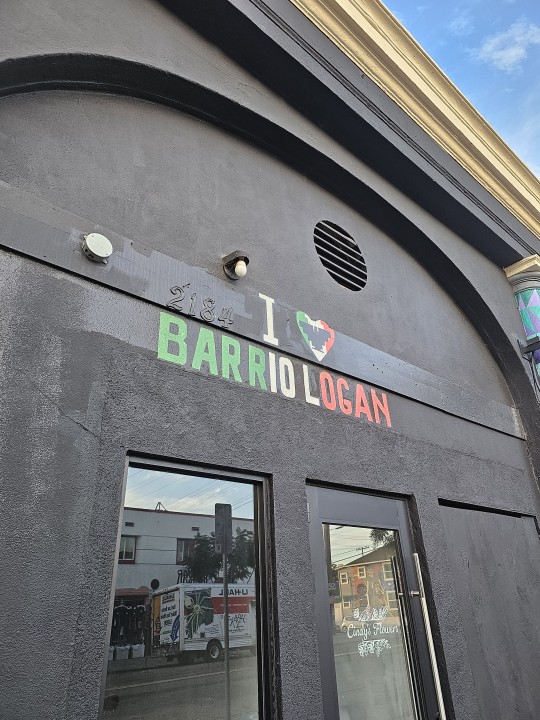

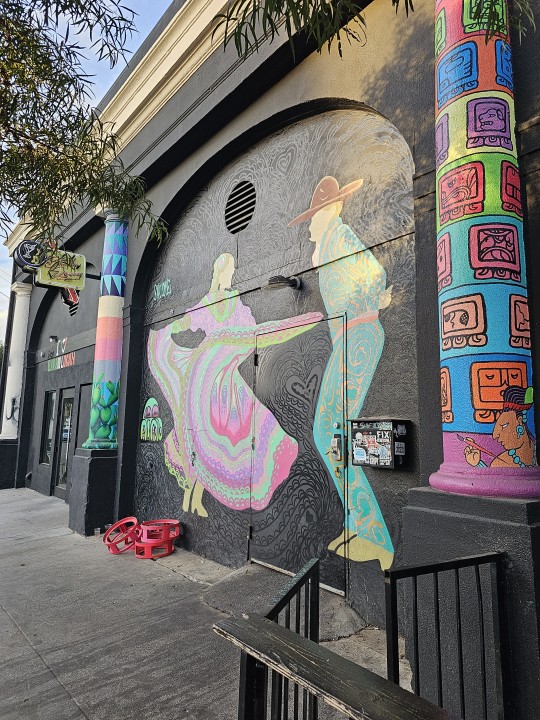

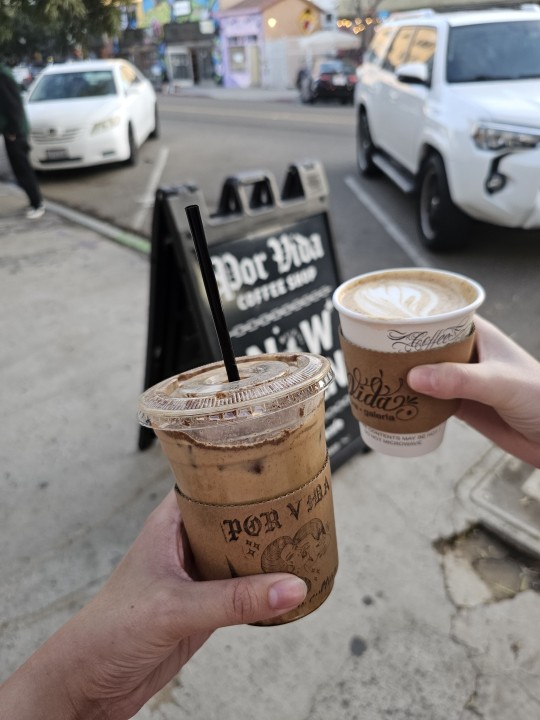
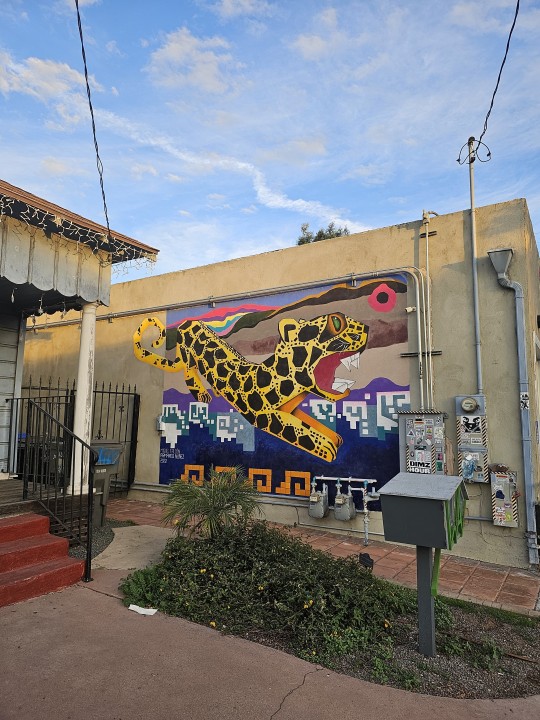
Just a day in my hood
#coffee#coffee shop#barrio#barrio logan#san diego#photography#travel#art#mural#street art#painting#murals#mexican#west coast#California#cali#drinks
19 notes
·
View notes
Photo
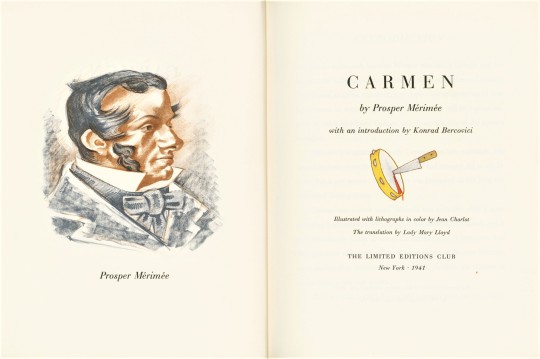
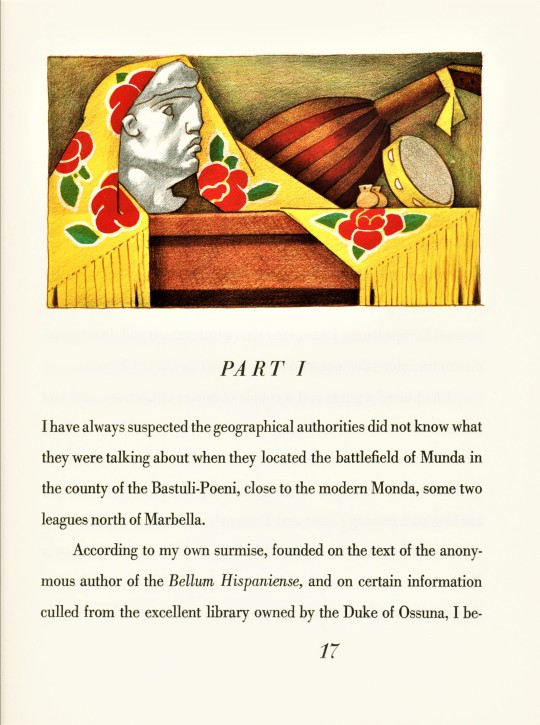

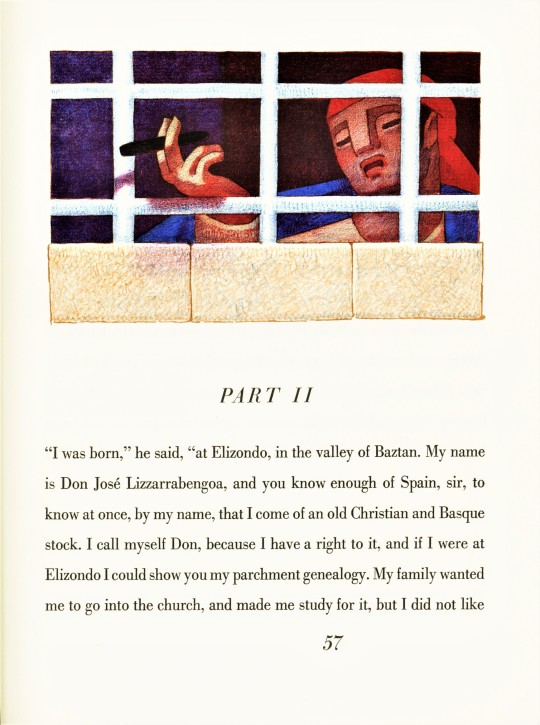



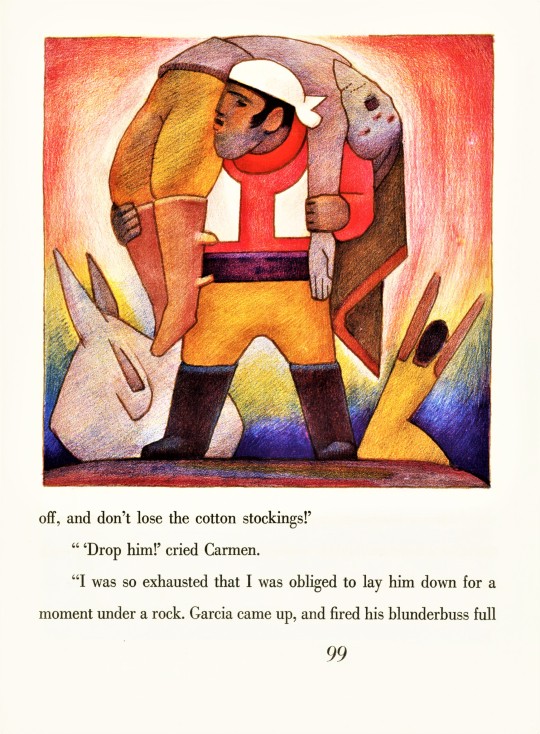
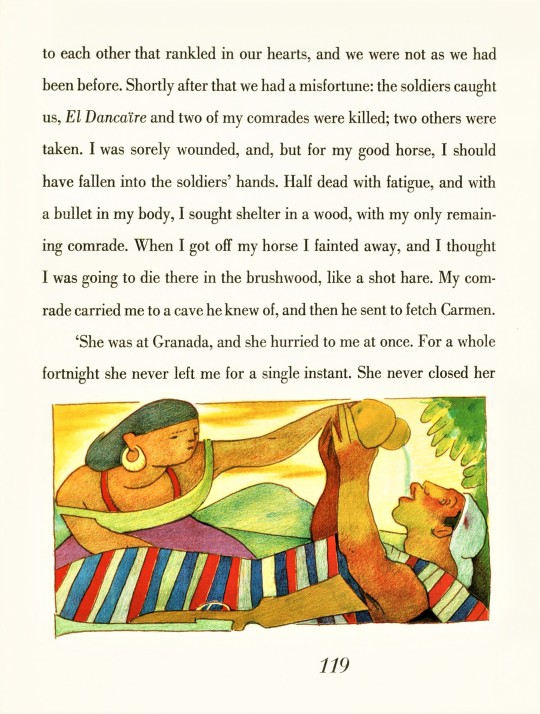
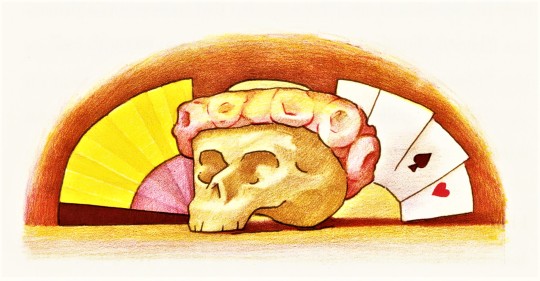
Fine Press Friday!
Our Limited Editions Club Shakespeare series keeps giving us more artists to look for in our collection! This week we found Carmen, by Prosper Mérimée (1803-1870) illustrated by French-born American painter and illustrator, Jean Charlot (1898-1979), published by the Limited Editions Club, New York, in 1941 in an unstated limited edition of 1500 copies signed by the artist. We learned about this edition because of the post we did a couple of weeks ago on Charlot’s illustrated edition of Shakespeare’s Henry VI, Part 3.
Mérimée’s 1846 novel about the eponymous Romani beauty, is most popularly well known from Georges Bizet’s famous opera of the same name, which is based on Part III of Mérimée’s story. The action is set in 1830s Andalusia, but Jean Charlot’s illustrations gives the story a Mexican flavor. Charlot worked mainly in Mexico and was a member of the Mexican Muralist Movement, sharing a studio with Fernando Leal who is considered to be one of the first Mexican Muralists. It was after the Mexican Revolution (1910-1917) that the new government sought to use murals to educate the public on social justice issues. From a young age, Charlot was fascinated by Mexican art and pre-Columbian artefacts and his mature work reflects this fascination, including in these illustrations.
The thirty-seven multi-layered color lithographs, which Charlot drew directly on the printing matrix, feel like miniature frescoes. Charlot laid down quick marks to color large areas of the image, which layer in overlapping color to give the image a lively energy. One could easily imagine one of the illustrations used as a page header as a mural above a doorway, signaling a transition. Or, one of the larger full-page illustrations as a mural on a large wall. I am taken by how these illustrations function well in both architectural and book spaces. The book is architecture.
The lithographs were printed by Charlot’s friend Albert Carman in New York and the type is 18-point Linotype Bodoni printed by Aldus Printers in New York. . The paper was made by the Worthy Paper Company, was watermarked with the name of the book and the covers are wrapped in a vibrant hand-blocked color silk.
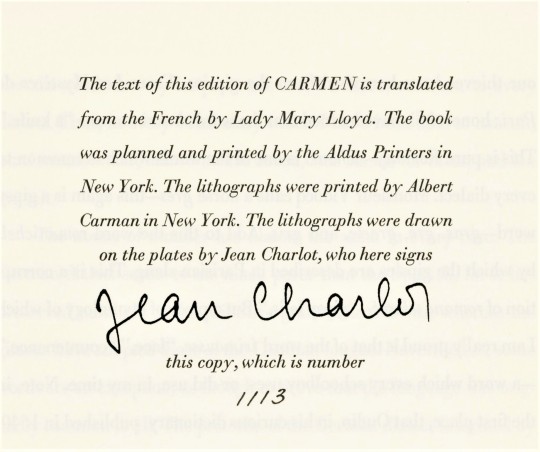

View more Limited Edition Club posts.
View more Fine Press Friday posts.
– Teddy, Special Collections Graduate Intern
#Fine Press Friday#Jean Charlot#Carmen#Prosper Merimee#Lithographs#color lithographs#Lithography#Limited Editions Club#LEC#Mexican Muralists#Murals#Mexican artists#American Artists#French Artists#Lady Mary Lloyd#Albert Carman#Aldus Printers#Fine press books#Linotype Bodoni#Bodoni type#Worthy Paper Company
59 notes
·
View notes
Text

Carnaval - Carlos Mérida - 1974 (click links at bottom of pic.to embiggen)

The Three Princesses - Carlos Mérida - 1955, Saint Louis Art Museum

Los Hechiceros - Carlos Mérida - 1958
8 notes
·
View notes
Photo

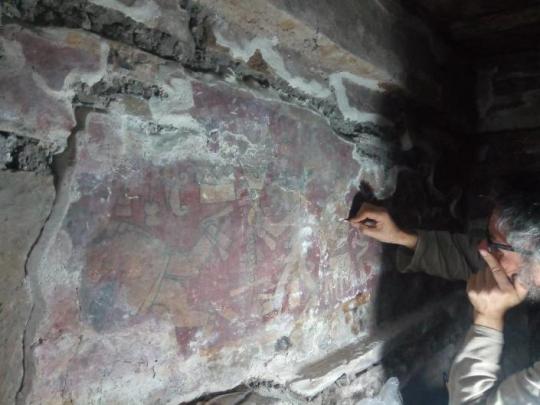
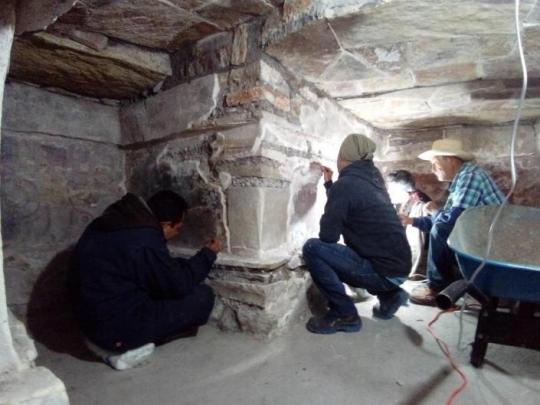


Colorful Murals Decorate 800-Year-Old Tombs Discovered in Mexico
Armed with weapons and shields, a group of warriors fight a fierce battle, their efforts preserved in red and black pigment — memorialized as a mural. Century after century, the warriors stood on the wall of a tomb complex in Mexico.
Archaeologists excavating a tomb complex in San Pedro Nexicho found themselves face-to-face with the faded fighting figures, Mexico’s National Institute of Anthropology and History said in a news release Wednesday, Jan. 18.
Excavations at the site uncovered five tombs dating from 200 A.D.to 1,200 A.D., researchers said. The burial sites belonged to the Zapotec people, an indigenous Mexican people group that formed one of the largest and most important pre-Hispanic settlements in the region.
The Zapotec — whose people and culture still thrive today — were the “first American society to develop a written tradition,” according to teaching materials from Haverford University.
Located on a mountain terrace, the largest tomb had a small ramp leading into the cross-shape burial structure, according to the release. Paintings decorated the walls, black-outlined figures moving across a deep red background.
A neighbor found this mural-covered tomb in 2010, and archaeologists spent years studying the site and restoring the structure to its former glory, officials said.
During this project, archaeologists uncovered four more Zapotec tombs, all over 800 years old. Some of these tombs had been looted, leaving only a few items behind such as small beads and fabric scraps, researchers said. Two tombs, however, remained untouched for centuries, their full burials intact.
In these untouched tombs, researchers found bones of the deceased and 240 objects, including writing tablets and sculptures in a unique mountain style. Photos show a few of these funerary objects.
In total, archaeologists have found about a dozen ancient Zapotec tombs, according to the release. These five tombs provide a glimpse into the burial customs for elites during pre-Hispanic times.
San Pedro Nexicho is in the state of Oaxaca and about 305 miles southeast of Mexico City.
By Aspen Pflughoeft.
#Colorful Murals Decorate 800-Year-Old Tombs Discovered in Mexico#San Pedro Nexicho#zapotec people#indigenous Mexican people#archeology#archeolgst#ancient tombs#ancient graves#ancient artifacts#history#history news#ancient history#ancient culture#ancient civilizations
77 notes
·
View notes
Text

José Clemente Orozco
Gods of the Modern World (From The Epic of American Civilization mural)
1932–1934
#josé clemente orozco#muralist#murals#mexican artist#Mexican art#mexican painter#Mexican painting#Mexican muralist#aesthetic#beauty#modern art#art history#aesthetictumblr#tumblraesthetic#tumblrpic#tumblrpictures#tumblr art#tumblrstyle#artists on tumblr#art aesthetic#mexican aesthetic#beauty aesthetic#aesthetic beauty
10 notes
·
View notes
Text
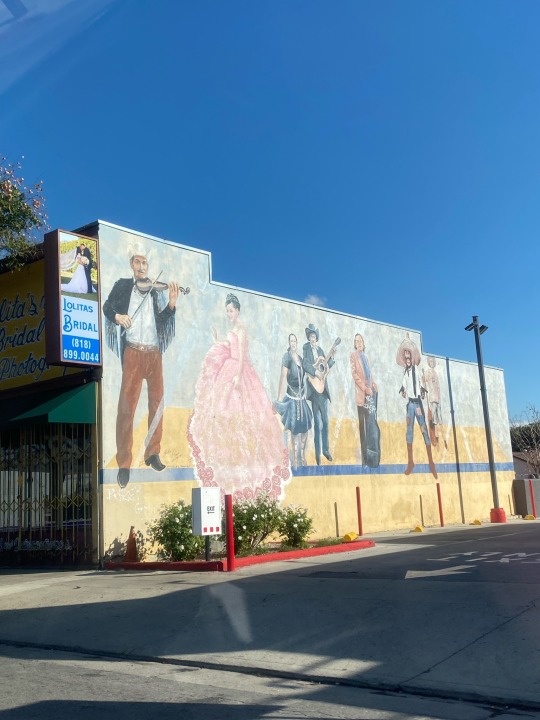


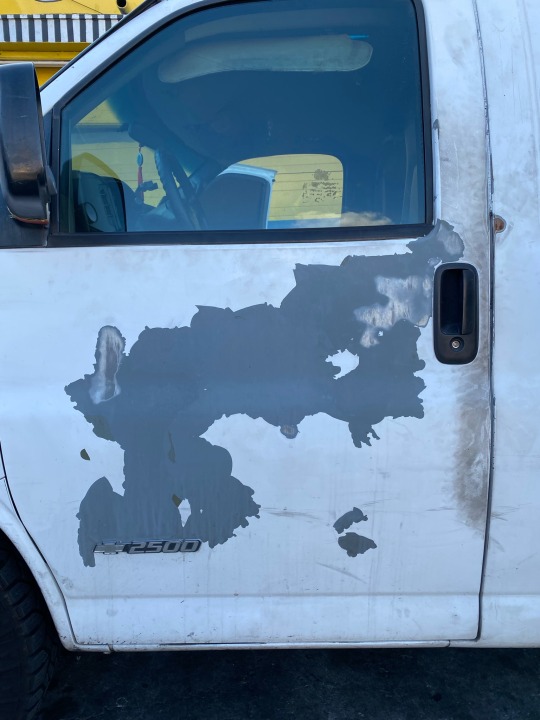




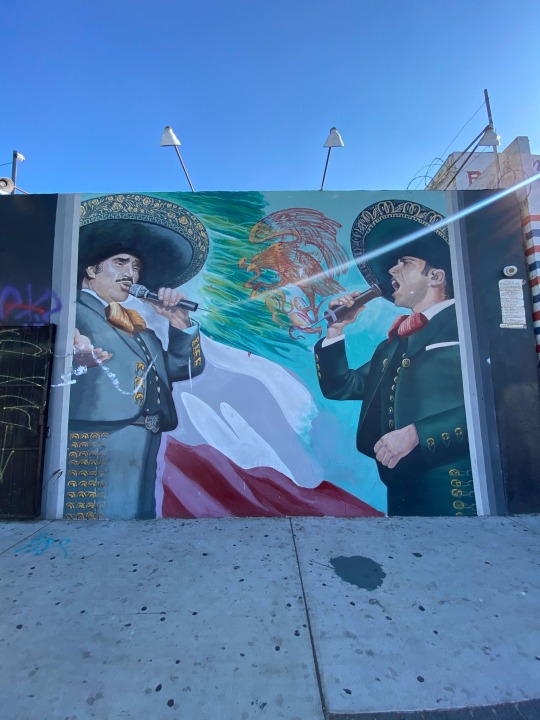

Visitando -2023
#life#familia#Los Angeles#home#Mexican mural#mexican artist#protect street vendors#street photography
5 notes
·
View notes